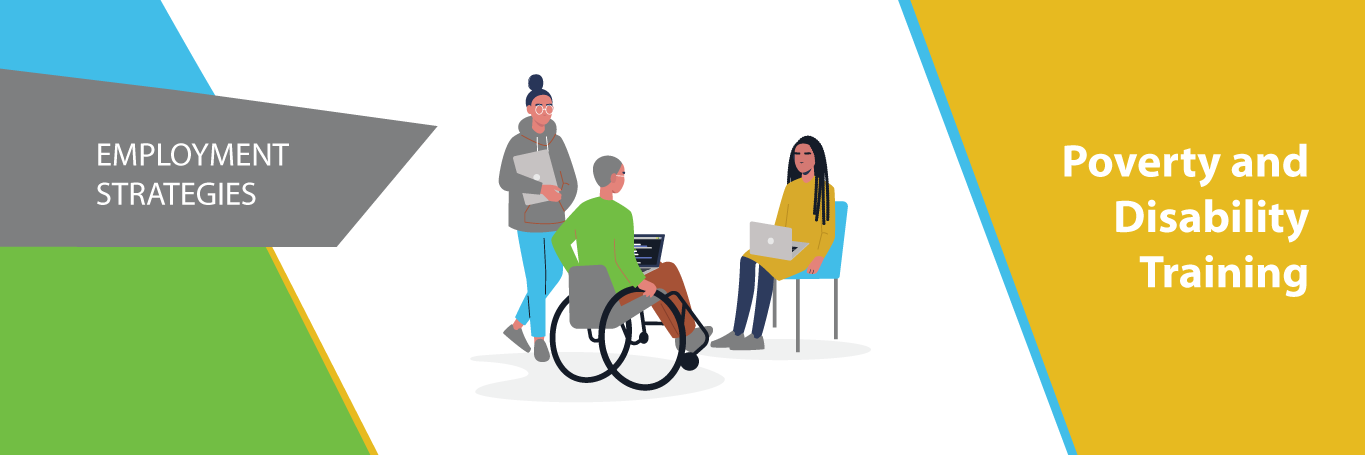Disability and poverty training provides vocational rehabilitation professionals with information and resources needed to understand and address the complex barriers resulting from the intersection of poverty and disability. It equips them with foundational knowledge necessary to design service plans that result in quality employment outcomes and increased financial self-sufficiency for people with disabilities.
Why is it Needed?
Working-age adults with disabilities are twice as likely as those without disabilities to earn less than the federal poverty threshold. They are less likely to be employed than their peers without disabilities and, if employed, have lower wages on average than those without disabilities. People of racial and ethnic minorities with disabilities experience even greater challenges and are especially financially vulnerable.
Disability can lead to poverty, and poverty can cause disability. Children who grow up in poverty are more likely to live with chronic illness and in environments that can lead to disabilities.
Source: National Disability Institute
How Does it Work?
Disability and Poverty Training can be done with an individual, in a group setting, in-person, or virtually. A disability and poverty trainer provides information and resources in an engaging manner. The focus of the training is to provide relevant information, as well as national and local resources, to support the vocational rehabilitation service provider.
Tips for Success
Professionals who work closely with people with disabilities living in poverty can use their knowledge and experience to create change. They can both advocate for consumers and work toward public policy changes that empower people with disabilities who want to work. Encourage service providers to:
- Raise Public Awareness - Talk with others about the relationship between poverty, disability, and race, and how they feed into one another. Create awareness of the complex inter-relationship between the three.
- Share Information with Other Professionals – Have conversations with community service providers to ensure vocational rehabilitation consumers receive the wrap-around services necessary to support quality employment.
- Empower and Hold Schools Accountable - Give schools the means to provide job training - and even job placement - before graduation for students with disabilities. Hold schools accountable for post-school outcomes of students with disabilities.

Want to know more about how this employment strategy can be incorporated into your work? Check out these resources:

Featured Training
Watch webcasts to gain valuable information that will help improve employment outcomes and quality of employment for people you serve.
- Poverty and Disability: An Overview
- Connecting Disability, Poverty, and Employment: Virginia VR’s Experience
- Financial Empowerment
- Microaggressions in Communication AND Communicating Internally
- Vocational Rehabilitation at the Crossroads of Disability and Poverty: Project E3 Featured in Workforce Studio Podcast

Related Tools and Resources
These tools and resources offer information to support your practice.
- Virginia DARS Project E3: Presentation Slides: Disability and Poverty
- Understanding the Influences of Race, Disability, and Poverty on Employment
- Examining Biases to Support Employment as a Means out of Poverty
- Policy Matters: Poverty & People with Intellectual Disabilities
- Rural Americans: Disabled, or Just Desperate?
- It Is Expensive to Be Poor
- African American Organizations to Know

Best Practices/Research
Project E3’s research summaries provide an “At-a-Glance” overview the latest research findings, as well as recommendations for best practices and how to incorporate them in your work.

Strategy Use in Targeted Communities
Several Project E3 Communities used this strategy to improve employment outcomes for their most underserved populations. They include:

